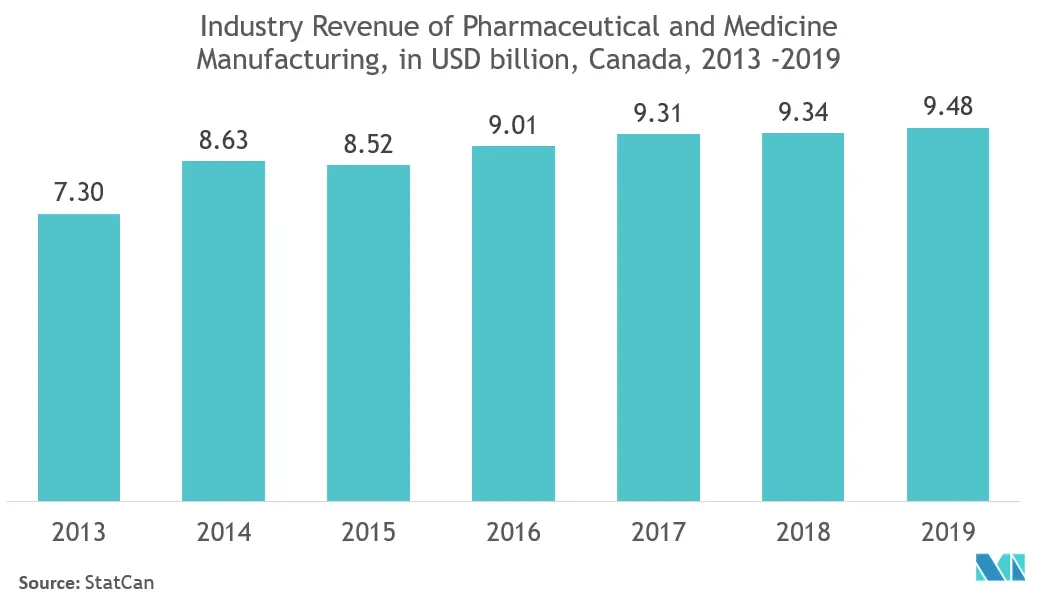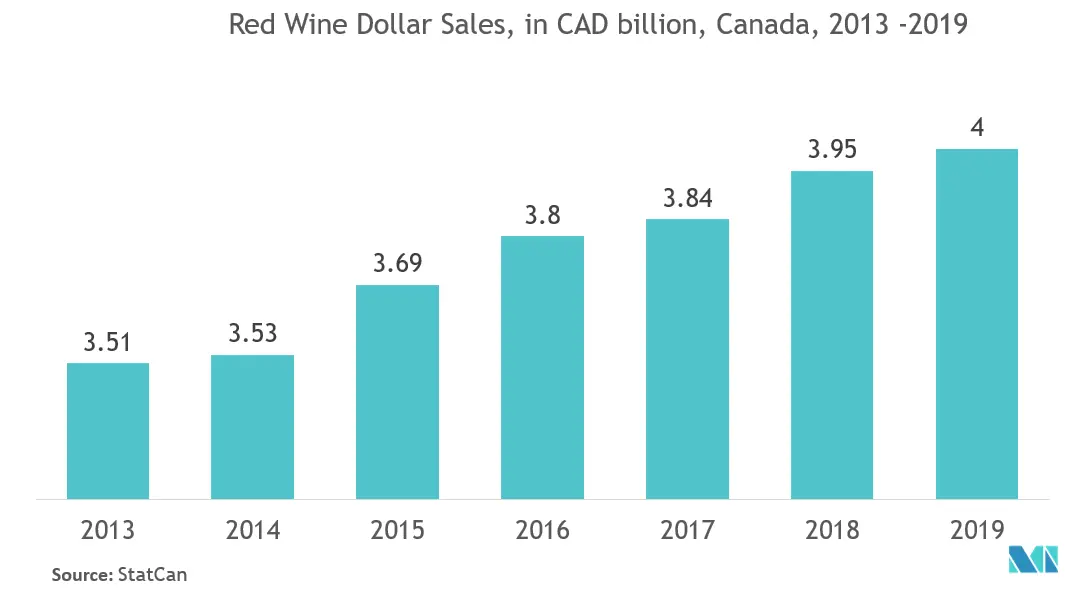Market Trends of Canada Glass Bottles and Containers Industry
This section covers the major market trends shaping the Canada Glass Bottles & Containers Market according to our research experts:
Beverage is Expected to Hold Major Share
- Glass bottles and containers are significantly used in the alcoholic and non-alcoholic beverage industry, due to its various properties to maintain chemical inertness, sterility, and non-permeability. Alcoholic drinks, like beer, accounted for the largest segment of the market, as glass does not react with the chemicals present in drinks and, therefore, preserves the aroma, strength, and flavor of these beverages, making it a favorable option for packaging. Due to this reason, a majority of the beer volume is transported in glass bottles, and this trend is expected to continue over the study period in the country.
- According to UN Comtrade, the trade value of non-alcoholic beverages imported to Canada accounted for USD 842.2 million in 2019. According to StatCan, the total volume of liquor sold reached 3.1 million liters in 2018. The wine sales have witnessed a significant growth of 4.6% and accounted for 32.4% of alcoholic beverage sales. The spirit sales grew by 4.4% and accounted for 23.7% of total alcohol sales. The glass packaging has a significant share in the overall alcoholic beverage market. With the ongoing increase in demand for alcoholic beverages, the market for glass bottles is expected to increase in the forecast period.
- In January 2020, the Quebec government has announced a new, more extensive consignment program that will include all glass, plastic, and metal drink containers between 100ml and 2L. All beverage bottles and containers, including glass bottles for wine and alcohol, will be turned in under the latest deposit system. The government says the goal is to reduce the amount of material that ends up in landfills by recovering and sorting them sooner. Wine and spirit bottles and water bottles and cans that were not part of the previous deposit program, which includes sparkling water, vegetable juices, and green teas, will be included in the new program.
- With recycling programs suspended around the country due to COVID-19 fears, one of Canada’s largest beer brewers says it is struggling to find enough bottles to keep up with production. In mid-March, Ontario’s beer retailing behemoth, The Beer Store, announced it would stop accepting empties from March 19 to March 31 to protect employees from being exposed to the coronavirus. The suspension expired, but the chain of 450 stores didn’t respond to questions about whether it would resume collecting used bottles and cans, though it said on its website that new information on its recycling program was pending.

Pharmaceutical is Expected to Witness Significant Growth
- The rapidly growing pharmaceutical industry across Canada is boosting the growth of the market. The demand for pharmaceutical glass and containers are majorly arising, and there is an increasing pharmaceutical production in the country, which is further increasing the need for the glass packaging for pharmaceuticals in the country. Additionally, as the United States is facing costly pharmaceutical imports from other countries than Canada, the US government authorized a pilot project for wholesalers and pharmacists to import versions of FDA-approved medicines from Canada.
- The introduction of stringent laws to enhance the quality and integrity of domestically manufactured drugs in the country leads to an increase in the use of glass for pharmaceutical packaging products. Additionally, the increasing demand for sterile medical packaging products from the pharmaceutical industries would further drive the growth of the market over the forecast period. According to StatCan, the industry revenue of pharmaceutical and medicine manufacturing accounted for 9.48 billion USD in 2019.
- Health Canada's packaging requirements are not sufficient enough to address environmental impacts, so federally licensed producers are stepping up with recycling programs. Most of the dispensaries are opting to store and display bulk amounts of dried cannabis in large glass jars. Moreover, the increasing demand for injectable pharmaceuticals in Canada is significantly driving the growth of glass bottles. The robust market for oncology and other high-potency drugs (such as antibody conjugates, steroids, and IV fluids that require quick onset of action), is expected to be the key growth driver.
- In May 2020, Laurent Pharmaceuticals Inc., a Canada-based biopharmaceutical company, made a statement that it was approved from Health Canada to initiate RESOLUTION, a Phase 2 randomized placebo-controlled trial testing once-a-day oral LAU-7b as one of the potential drug candidate to help fight the coronavirus disease. The trial, which is expected to start imminently in numerous hospitals in Canada, will enroll almost 200 hospitalized COVID-19 patients for a treatment duration that lasts for 14 days. The final vaccine might be packaged in ready-to-use glass syringes. A handful of manufacturers are based in Canada, but many still have to import the glass tubing for vials.


